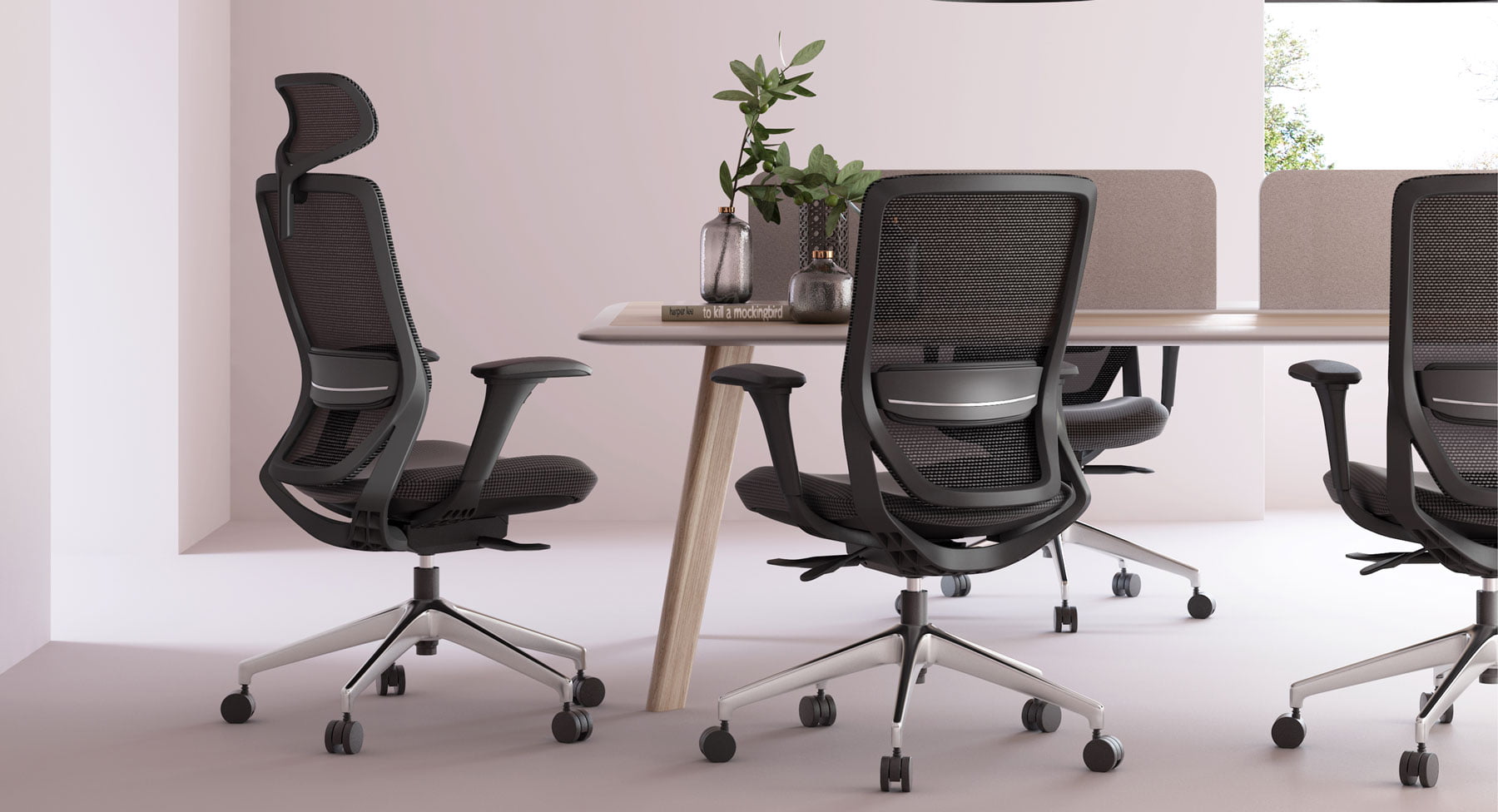
Will this office chair suit me?
As you prepare to buy a new chair, you hesitate just before clicking the 'Buy Now' button. A lingering doubt creeps in, and you find yourself pondering.... "will this office chair really suit me?"
The choice of a comfortable office chair is highly subjective. We all have different body shapes and preferences, and there is no universal solution.
Much like many aspects of life, office chairs don't adhere to a universal 'one-size-fits-all' principle.
The design of your office chair matters as a singular size cannot cater to everyone's needs.
So...."will this office chair suit me?"
To provide reassurance, it's essential to consider the following factors:

All office chairs have a weight rating which is the maximum user weight they are designed to support. For warranty and safety purposes, it is important that your weight does not exceed the weight rating of the selected chair. Standard office chairs are designed for individuals weighing up to 120kg.
If you weigh more than 120kg, you should consider a chair with a higher weight rating. These office chairs have a weight rating greater than 120kg.
1. Automatic Self-Adjusting Tension Mechanism
Our office chairs come equipped with a tilt mechanism, enabling you to lean backward and alter the angle between the backrest and the seat. The tilting action is typically governed by a spring within the tilt mechanism, and by adjusting the tension in this spring, the backrest’s tilting motion, or resistance, can be modified. Adjustment of the spring tension is done either manually or automatically. Manual adjustment involves turning a handwheel located beneath or to the side of the chair, while self-adjusting tension mechanisms automatically adapt the spring tension based on the user’s weight.
If multiple individuals will be using the same office chair throughout the day, a chair with a manual tension adjustment knob becomes inconvenient and time-consuming. In such cases, it is advisable to opt for a chair featuring an automatic self-adjusting tension mechanism. These office chairs have an automatic self-adjusting tension mechanism.
2. Seat Depth Adjustment
Office chairs equipped with a seat slider empower you to fine-tune the seat depth, enabling you to move the seat pan backward or forward to align with the length of your thighs. When you are seated comfortably with your back against the backrest of the chair, there should be a 2-3 finger gap between the front edge of the seat and the back of your knees.
If a number of people will be using the same office chair throughout the day, a chair with a seat slider allows each person to change the seat depth to suit their leg length, thereby maintaining a correct ergonomic seated posture. These office chairs have a seat slider.
Office chairs equipped with a seat slider empower you to fine-tune the seat depth, enabling you to move the seat pan backward or forward to align with the length of your thighs. When you are seated comfortably with your back against the backrest of the chair, there should be a 2-3 finger gap between the front edge of the seat and the back of your knees.
If you are tall with longer legs, a seat slider allows you to increase the seat depth, thereby maintaining a correct ergonomic seated posture. These office chairs have a seat slider.
A headrest offers support for the neck and upper back, particularly during periods of relaxation or when reclining in a chair. For individuals of taller stature, it is crucial to verify that the headrest is adaptable and extends to a sufficient height to provide adequate support for the head and neck. Note: A headrest is not obligatory. Taller users can select an ergonomic or orthopedic chair without a headrest and not compromise either their comfort or wellbeing.
If you are exceptionally tall and require a chair with a headrest, these office chairs have an adjustable headrest designed to provide comfortable support for your neck and head.
If you have chronic back pain, you may want to consider an orthopedic chair that has more adjustable features.
An orthopedic chair has multiple adjustment features to address chronic back ailments and is typically dedicated to a single user. If other people use this chair, they may change the settings, which means you will have to reset the chair to your preferences every time you use it.
Office chairs equipped with a seat slider empower you to fine-tune the seat depth, enabling you to move the seat pan backward or forward to align with the length of your thighs.
If you have coccyx-related issues, a chair with a seat slider allows you to adjust the seat depth to alleviate pressure on the coccyx, thereby improving your seated comfort and wellbeing. These office chairs have a seat slider.

